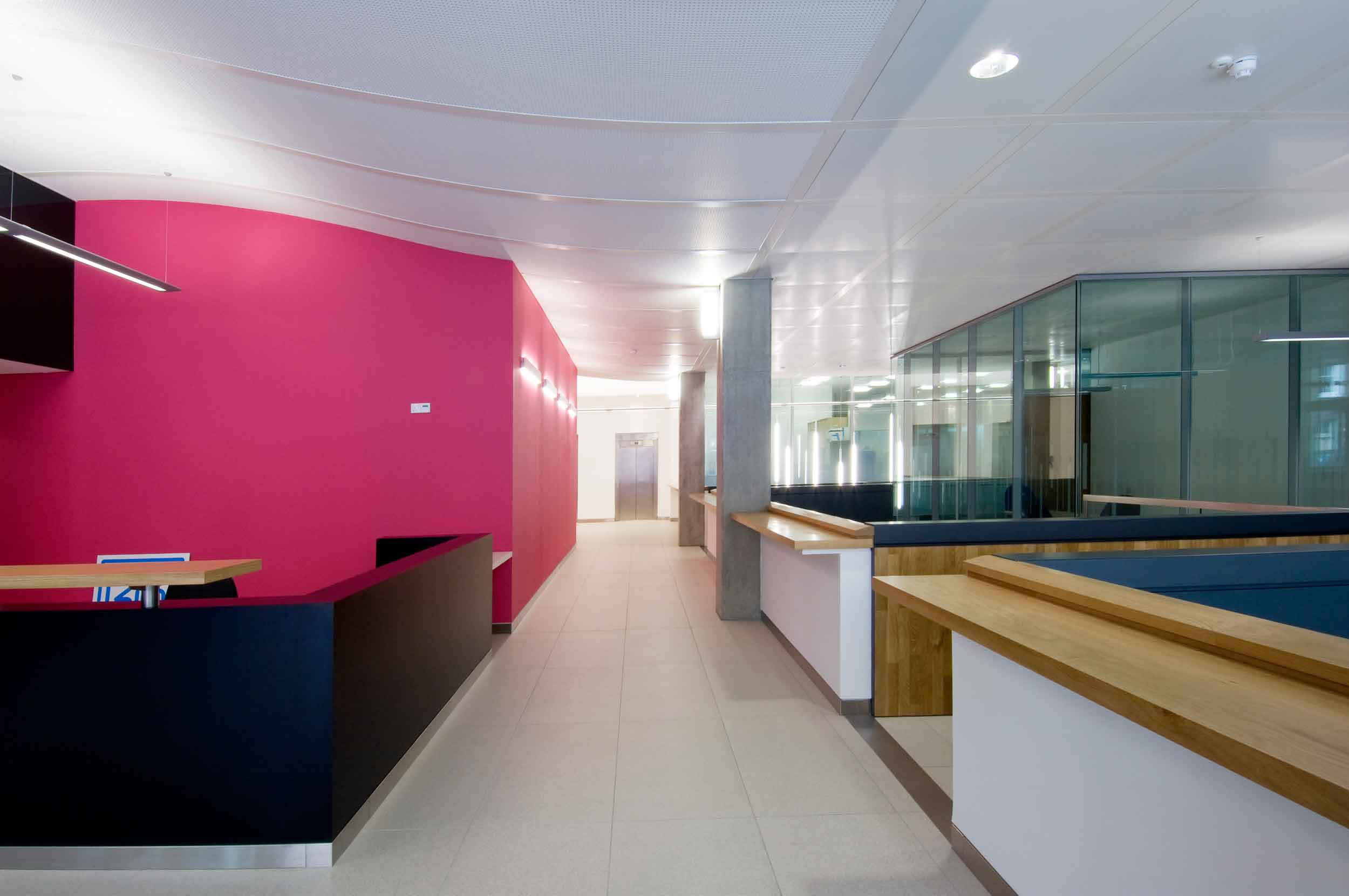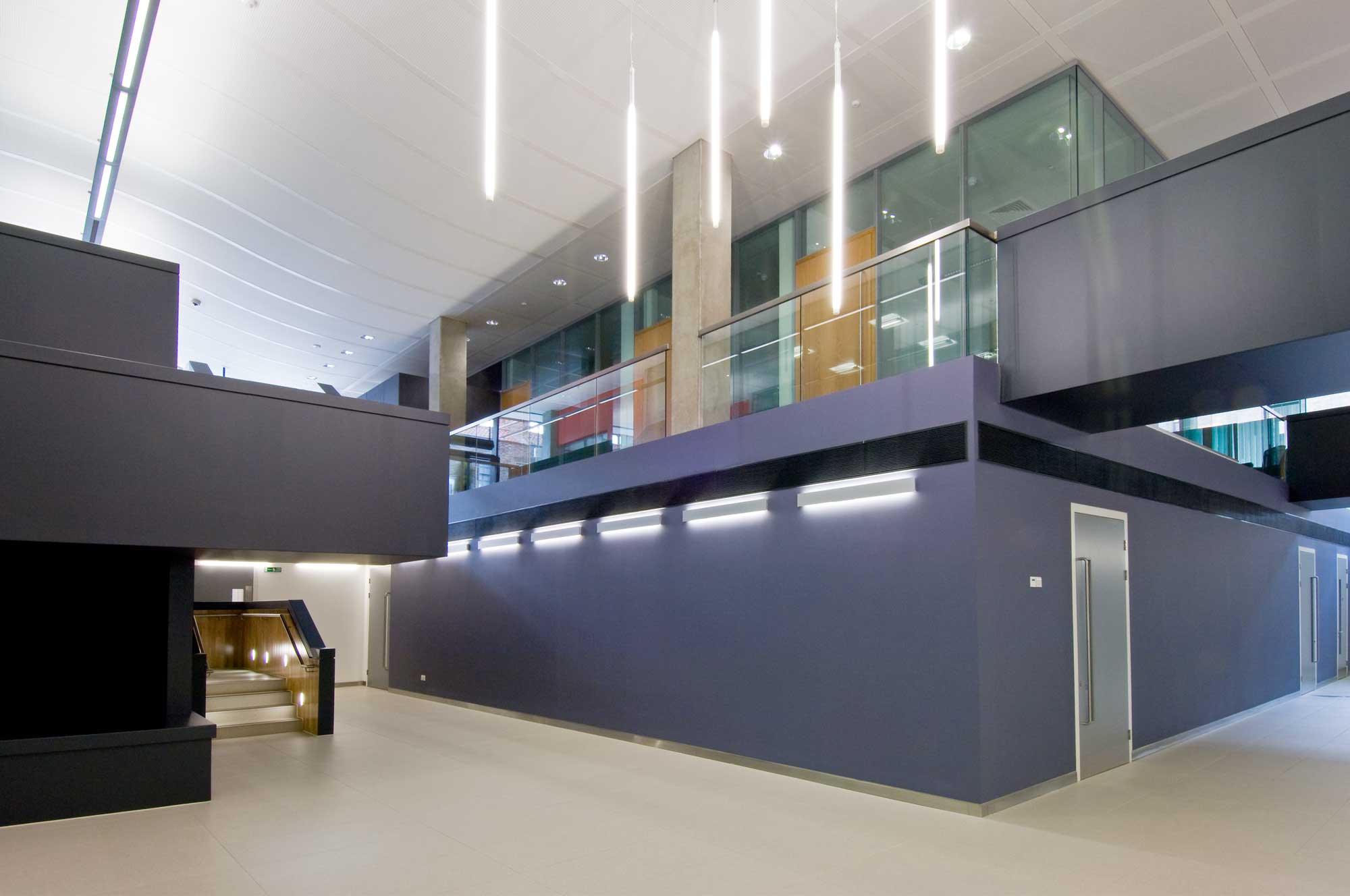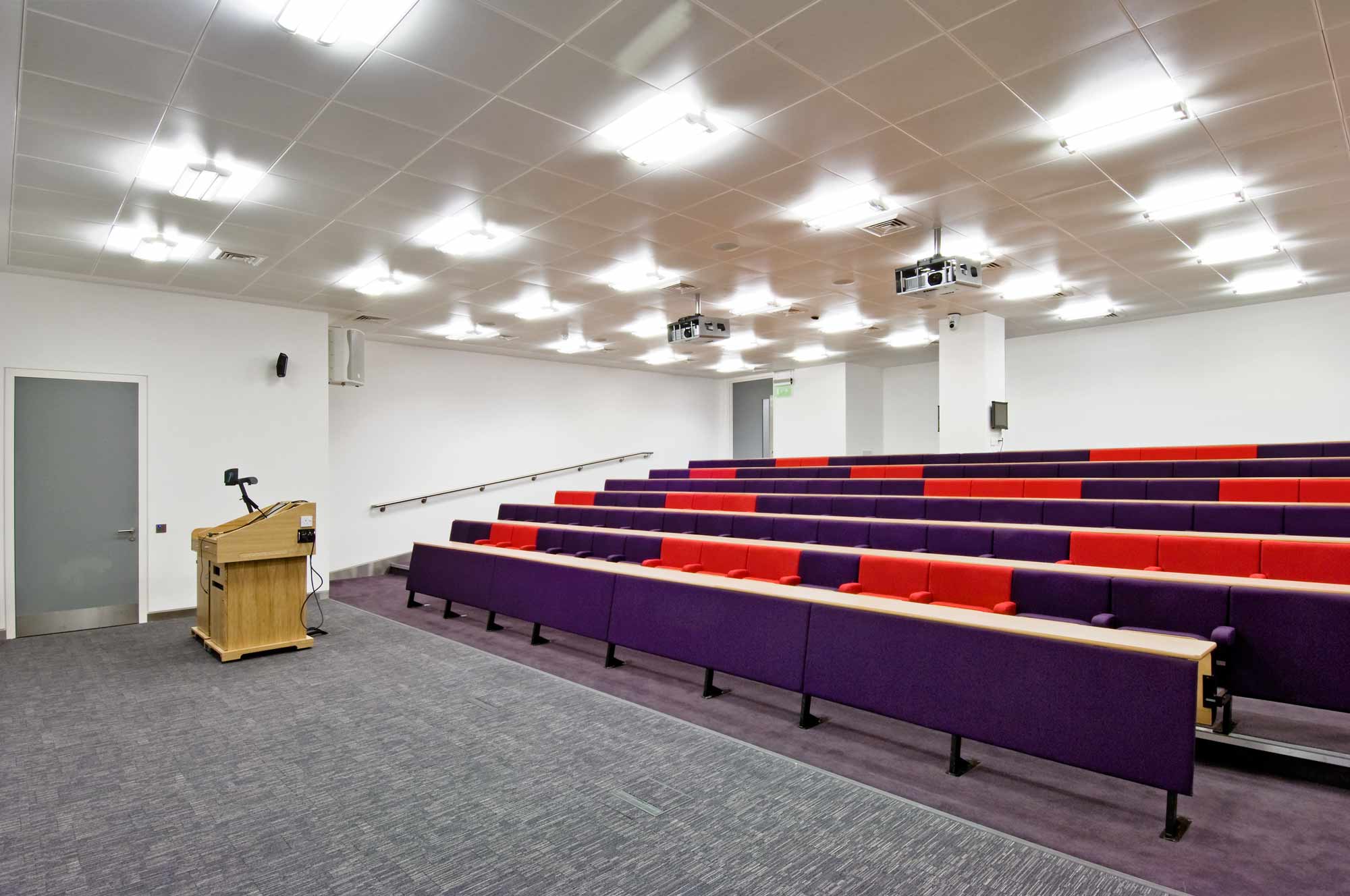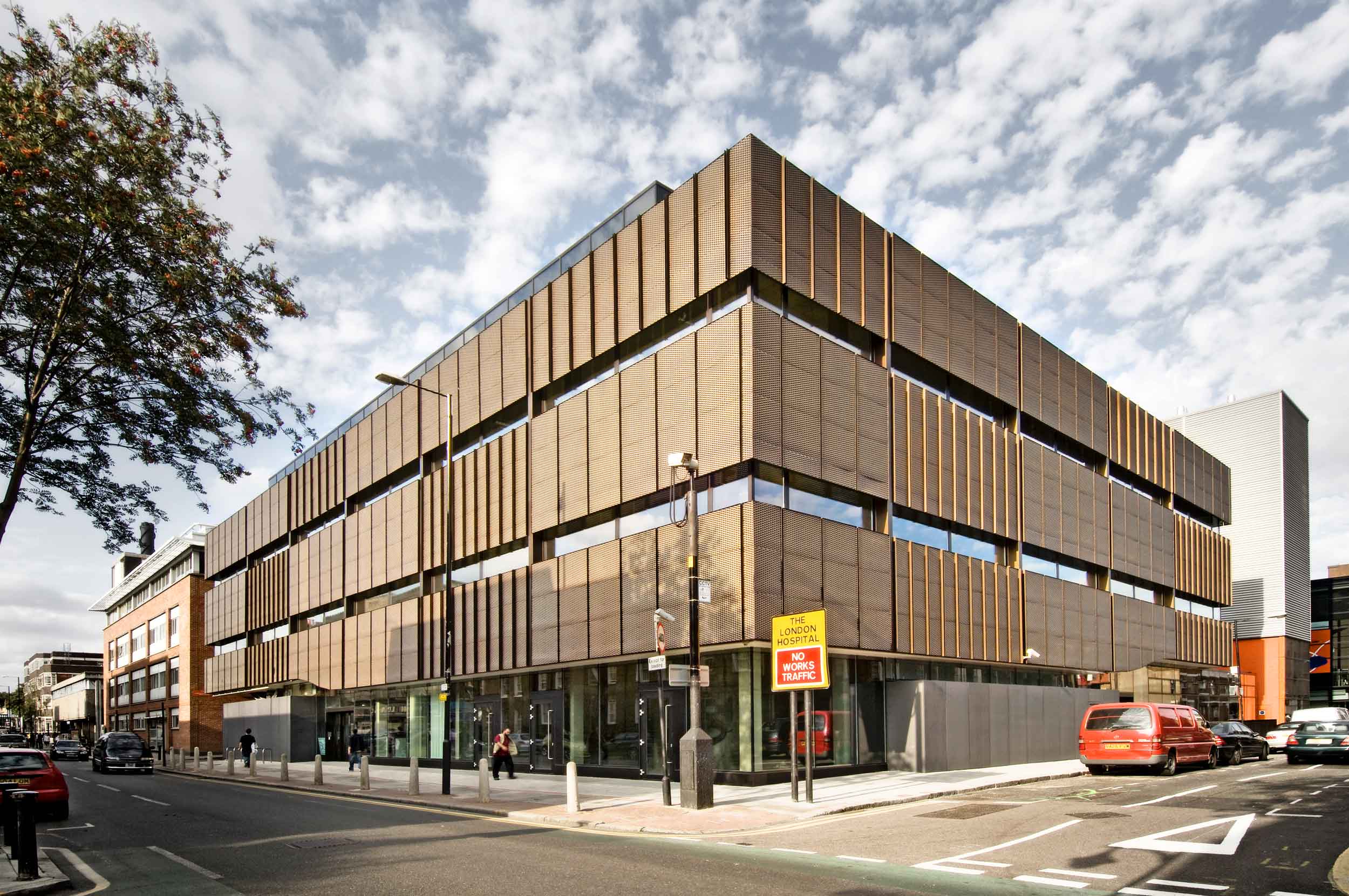
First delivered in 2009, Queen Mary's new biosciences centre has become a cornerstone of the university's Whitechapel campus, offering 3,700 square metres of flexible laboratory and office spaces.
Start-up laboratory facilities alongside lecture theatres at Queen Mary University in East London.
All facilities are designed to attract high-tech life-sciences activities, ranging from university teams to start-up enterprises and established global firms.
This integration of the academic and commercial research worlds within a singular building has required a flexible structure, to allow spatial modification to accommodate a range of potential tenants. The design also encourages exchange and interaction through the remaining shared spaces such as the café, lecture theatre, teaching rooms and meeting rooms.
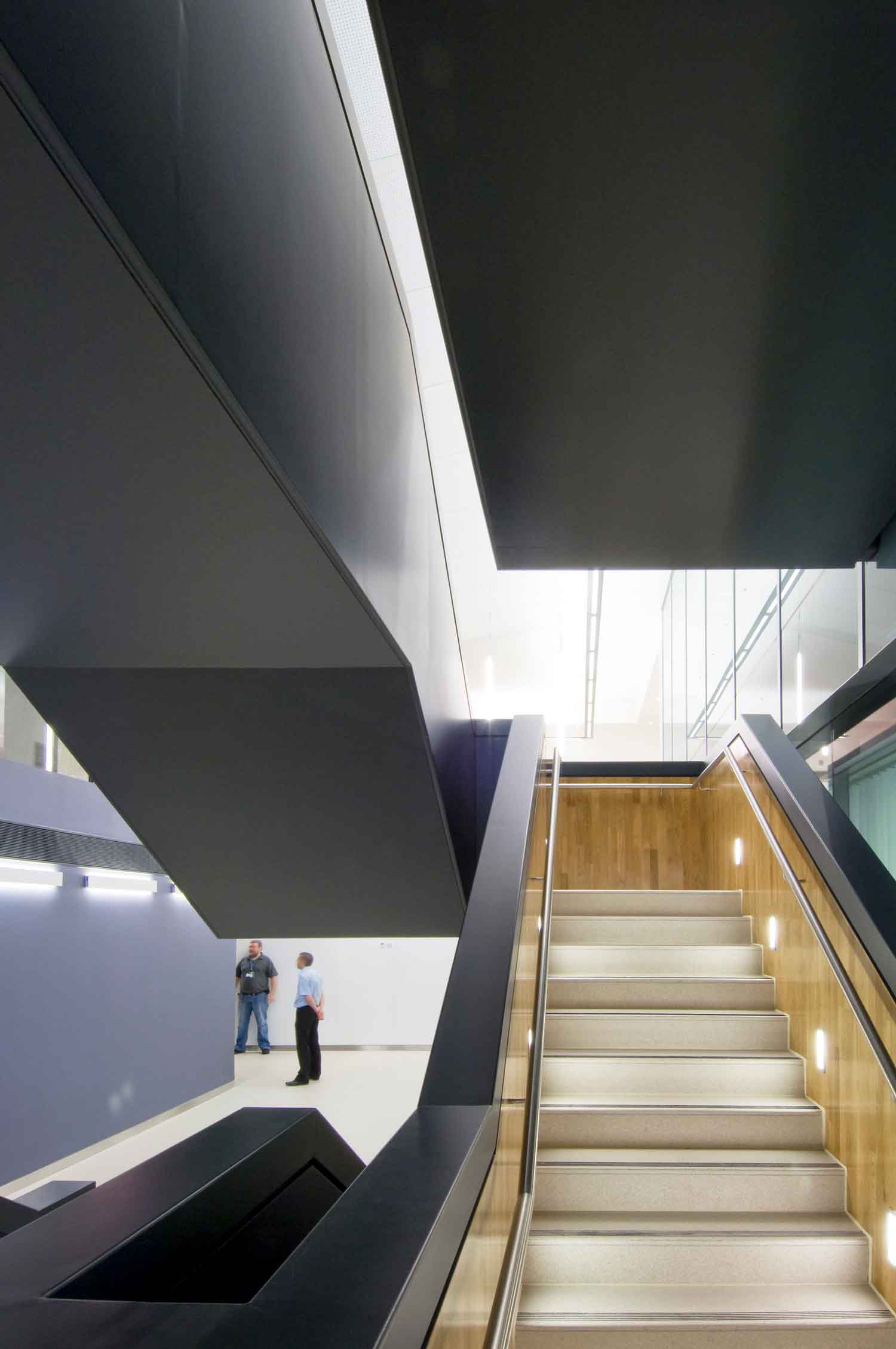
Demonstrating this adaptability to suit the evolving industry, in 2020 we are now designing a third-floor fit-out to receive the new tenant BGI Genomics – a publicly listed commercial biotech company. The new fit-out provides laboratory and office space for 30 staff, with AKT II’s design work including structural performance analysis to ensure that the updated structure maintains the sensitive vibration requirements of the tenant’s genetic sequencing equipment.
The building’s modular façade incorporates brise soleil made from a tensioned mesh of perforated bronze, which together with the deeply recessed windows provides shading and reduces interior solar heat gain. The lower-ground laboratories are double-height to allow generous daylight. A single large duct, measuring four by six metres, provides flexible and accessible housing for the buildings many required services.
While directly serving the university, the development also forms part of the ongoing regeneration of the Whitechapel area of east London. This wider masterplan programme is jointly developed with the London Development Agency, including Thames Gateway funding from the UK’s Department for Communities and Local Government.
